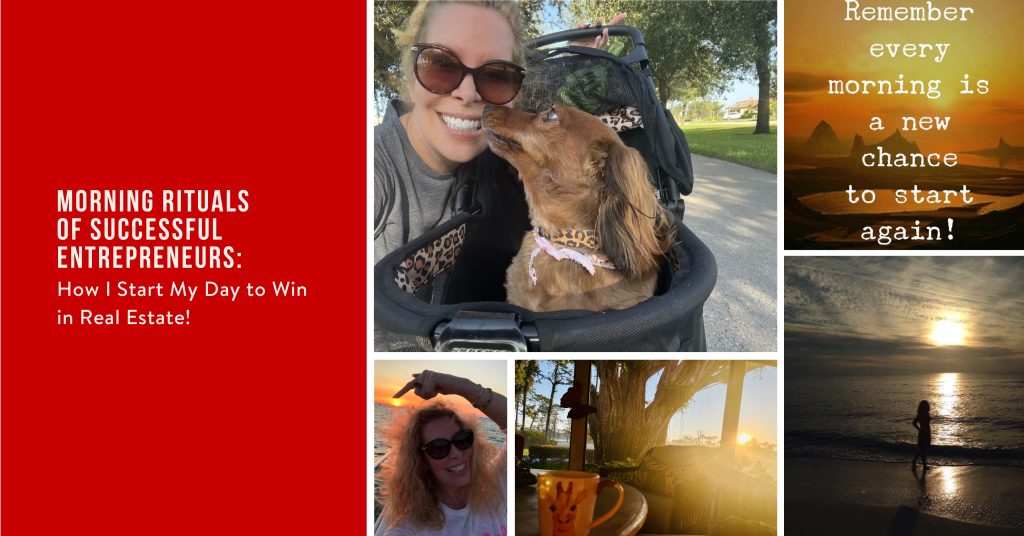Picture this: It’s 2013, I’ve just launched McQuaid & Company with $17,000 and a dream, and I’m working around the clock to keep the lights on. I’m stressed, exhausted, and frankly, not the leader my team deserved. I thought pushing harder was the answer. I was wrong.
Here’s what I discovered: You can’t pour from an empty cup. And if you’re running on fumes, your business will too. The breakthrough came when I realized that incorporating wellness into my leadership wasn’t selfish—it was essential for everyone counting on me.
The Wake-Up Call: When Stress Nearly Broke Me
During those early “cereal moments” (that’s what I call the times when I was literally eating cereal for dinner to save money for payroll), I thought sacrifice meant sacrificing everything—my health, my peace of mind, my joy. I was working myself into the ground, thinking that was what “good leaders” do.
The turning point came during one particularly brutal day when everything seemed to go wrong at once. I was driving home with heaviness in both my head and heart, feeling like the weight of everyone’s livelihood was crushing me. That’s when I made a conscious decision that changed everything: I refused to let anyone or anything steal my joy.
But here’s the thing—that decision wasn’t just about positive thinking. It was about creating sustainable systems and practices that would protect my wellness while building my business. Because what I learned is this: stressed leaders create stressed teams, and stressed teams don’t create exceptional experiences for clients.
The Science Behind Wellness-Driven Leadership
Let me share something that might surprise you: studies show that companies with wellness-focused leadership have 21% higher profitability and 40% lower turnover. Why? Because when leaders model healthy habits, it creates a ripple effect throughout the entire organization.
At SERHANT. Southwest Florida, we’ve seen this firsthand. When I started prioritizing my wellness, our team productivity increased, our client satisfaction scores went up, and—this is the kicker—our revenue grew. It wasn’t a coincidence.
Here’s what the research tells us:
- Leaders who practice stress management make 23% better business decisions
- Teams with wellness-focused leaders show 31% higher productivity
- Companies with healthy leadership cultures have 2.3x higher employee engagement
- But beyond the numbers, there’s something even more important: wellness-driven leaders create environments where people actually want to work.
My Five Pillars of Wellness Leadership
After over two decades in business, I’ve developed what I call my “Five Pillars of Wellness Leadership.” These aren’t just feel-good concepts—they’re practical strategies that have kept me (and my business) thriving through recessions, hurricanes, pandemics, and every challenge in between.
Pillar 1: Morning Rituals That Set Your Intention
Every morning at 4 a.m. (yes, I’m one of those people!), I start with what I call my “gratitude and grace” routine. Before checking emails or diving into the day’s chaos, I spend time with Penny (my little Dachshund), say my morning mantra, and read something that feeds my soul.
My morning mantra: “I am open to receiving all the goodness, abundance, and love that the Universe has to offer. Amen.”
This isn’t just woo-woo wellness talk—it’s strategic leadership preparation. Those quiet moments help me approach challenges from a place of abundance rather than scarcity, creativity rather than reactivity.
Try this: Create a 15-minute morning routine that grounds you before the day begins. It might be meditation, journaling, or simply sitting with your coffee without scrolling your phone. The key is consistency.
Pillar 2: Stress Reframing as a Leadership Superpower
Here’s something I learned from my therapist Dianne (yes, I have a therapist, and every leader should!): stress isn’t the enemy—unmanaged stress is. I developed what I call my “fishing visualization” for tough situations.
When I’m in a challenging negotiation or dealing with a difficult client, I imagine myself fishing and reeling in the problem. Some fish are bigger than others, but I resolve not to let myself be dragged out to sea. I take control of the problem and slowly, steadily reel it in rather than letting it control me.
The result? I stay calm, make better decisions, and model composure for my team. When your team sees you handle pressure with grace, they learn to do the same.
Pillar 3: Physical Wellness as Business Strategy
I swim or run on the treadmill every morning, and it’s not just about staying fit—it’s about staying sharp. Some of my best business ideas come during those workouts. There’s something about moving your body that unlocks creativity and problem-solving abilities.
But here’s the leadership angle: when I prioritize my physical health, I have more energy for my team, more patience with challenging situations, and more resilience during tough times. Plus, when your team sees you taking care of yourself, it gives them permission to do the same.
Leadership tip: Block time for physical activity in your calendar just like you would any other important meeting. Your business will thank you.
Pillar 4: Creating Boundaries That Actually Stick
This was my hardest lesson. As entrepreneurs, we think we need to be “on” 24/7. But constant availability doesn’t make you a better leader—it makes you a burned-out one.
I learned to create what I call “sacred spaces”—times and places where work isn’t allowed. My screened porch under my 30-year-old Ficus tree is one of those spaces. It’s where Penny and I decompress, where I process the day, and where I reconnect with my “why.”
The business impact? When I return from these breaks, I’m more creative, more patient, and better able to see solutions I missed when I was in “grind mode.”
Pillar 5: Wellness as Team Culture
Here’s where wellness leadership gets really powerful: when you make it about more than just yourself. At SERHANT. Southwest Florida, we’ve built wellness into our culture:
- We have massage chairs in our office “Zen Zone”
- We celebrate each other’s wins and support each other through challenges
- We have “Delight Days” where we do something fun together as a team
- We encourage time off and actually mean it
The result? Our team retention is incredibly high, our energy is infectious, and our clients feel that positive vibe the moment they walk in our door.
Practical Strategies for Busy Leaders
I know what you’re thinking: “Tiffany, this sounds great, but I barely have time to eat lunch, let alone meditate and exercise.” I get it. Here are some micro-wellness strategies that take minutes but make a massive impact:
The 3-Minute Reset
Between meetings, take three deep breaths and ask yourself: “What energy do I want to bring to the next conversation?” This simple practice can shift your entire day.
The Gratitude Traffic Light
Stuck in traffic? Instead of stressing, use that time to mentally list three things you’re grateful for. It transforms dead time into recharge time.
The Walking Meeting
Take phone calls while walking, either outside or around your office. Movement boosts creativity and helps you think more clearly.
The End-of-Day Transition
Before leaving work, write down three wins from the day and one thing you’re looking forward to tomorrow. It helps you mentally shift from work mode to personal time.
When Wellness Meets Crisis Leadership
The real test of wellness leadership comes during crisis. When Hurricane Ian hit Naples, we faced a complete market shutdown during our busiest season. Instead of panicking, I went to my peaceful place—Ave Maria, where I’d sit by the lake and surrender my fears.
Those reflective sessions that helped me pivot weren’t just inner work—they reminded me of the ways we’ve leaned into community and creativity before, like when I leaned into connection at The Power of Local Spring Events in Real Estate.
The lesson? Wellness practices aren’t luxuries you indulge in when times are good—they’re essential tools that help you lead effectively when times are tough.
The Ripple Effect: How Your Wellness Impacts Everyone
Here’s something beautiful I’ve discovered: when you model wellness as a leader, it gives everyone around you permission to prioritize their own well-being. My assistant Helen, now in her 80s, has become a master of work-life balance. Nicholas, our VP of Operations, takes time for creative projects that actually make him better at his job. Nicole, our VP of Marketing, successfully navigated new motherhood while maintaining her career because we built flexibility into our culture.
The business impact is undeniable:
- Lower stress leads to fewer sick days and higher productivity
- Balanced leaders make better strategic decisions
- Wellness cultures attract top talent and retain great people
- Happy teams create exceptional client experiences
Your Wellness Leadership Action Plan
Ready to incorporate wellness into your leadership style? Here’s how to start:
Week 1: Assessment
Track your energy levels throughout the day
Notice when you feel most stressed and what triggers it
Identify one area where you feel most out of balance
Week 2: Morning Ritual
Create a simple 10-15 minute morning routine
Include gratitude, intention-setting, or quiet reflection
Stick to it for seven days straight
Week 3: Stress Management
Practice the “fishing visualization” or develop your own stress-reframing technique
Take three 5-minute breathing breaks throughout your day
Notice how differently you respond to challenges
Week 4: Team Integration
Share what you’re learning with your team
Ask them what wellness means to them
Implement one small wellness initiative in your workplace
The Bottom Line: Wellness IS Business Strategy
Here’s what I want you to remember: incorporating wellness into your leadership isn’t about perfect work-life balance (spoiler alert: it doesn’t exist). It’s about creating sustainable practices that help you show up as your best self for your team, your clients, and your business.
When I started prioritizing wellness, people asked if I was worried about becoming “soft” as a leader. The opposite happened. Wellness made me stronger, more decisive, and more effective. It gave me the resilience to build a company that thrives through any challenge.
Because here’s the truth: You can’t build a sustainable business on an unsustainable lifestyle.
Your business needs you at your best, not at your most exhausted. Your team needs a leader who models healthy boundaries, not someone who glorifies burnout. Your clients deserve someone who brings joy and energy to their biggest life decisions, not someone running on caffeine and stress.
So take care of yourself with the same dedication you bring to taking care of your business. The two aren’t separate—they’re deeply connected. When you win at wellness, everyone wins. Now go take a deep breath, block some time for yourself this week, and remember: the world needs leaders who know how to sustain themselves while building something beautiful.


